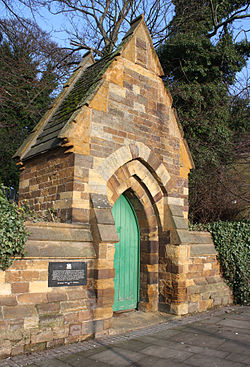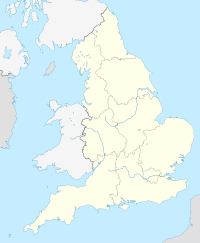Northampton Castle
| Northampton Castle | |
|---|---|
| Northampton, England | |

All that remains of Northampton Castle: a postern that was dismantled from its original position and rebuilt into the wall of Northampton railway station
|
|
| Coordinates | 52°14′13″N 0°54′18″W / 52.237°N 0.905°WCoordinates: 52°14′13″N 0°54′18″W / 52.237°N 0.905°W |
| Type | Motte-and-bailey castle |
| Site information | |
| Condition | Destroyed |
| Site history | |
| Built | 1084 |
| Built by | Simon de Senlis |
Northampton Castle was one of the most famous Norman castles in England. It was built under the stewardship of Simon de Senlis, the first Earl of Northampton, in 1084. It took several years to complete, as there is no mention of it in the Domesday Book, a great survey of England completed in 1086. The castle site was outside the western city gate, and defended on three sides by deep trenches. A branch of the River Nene provided a natural barrier on the western side. The castle had extensive grounds and a large keep. The gates were surrounded by bulwarks made of earth, used to mount artillery. The castle was 'obliterated' by the arrival of a railway branch of what is now the West Coast Main Line in the 19th century, the station of which was built on the castle site and the construction of the original Northampton Castle railway station.
In the reign of Henry II, the castle was in the hands of the Crown. In the civil wars between King John and his barons, the latter used it as a stronghold. When the King prevailed, the castle was entrusted to Fawkes de Breaute, whom the King admired for his courage during the war.
In 1164, Thomas Becket was tried at the castle before a great council. Having escaped by dressing as a monk, Becket then fled to France.
In 1264, in the wars between King Henry III and his nobles, the castle was owned by the confederate barons and governed by Simon de Montford. When the King defeated the garrison, the castle again reverted to the Crown. It remained so until three years into King Edward III's reign, when Thomas Wake, who was then sheriff of Blisworth, claimed it belonged to the county under his jurisdiction.
...
Wikipedia

